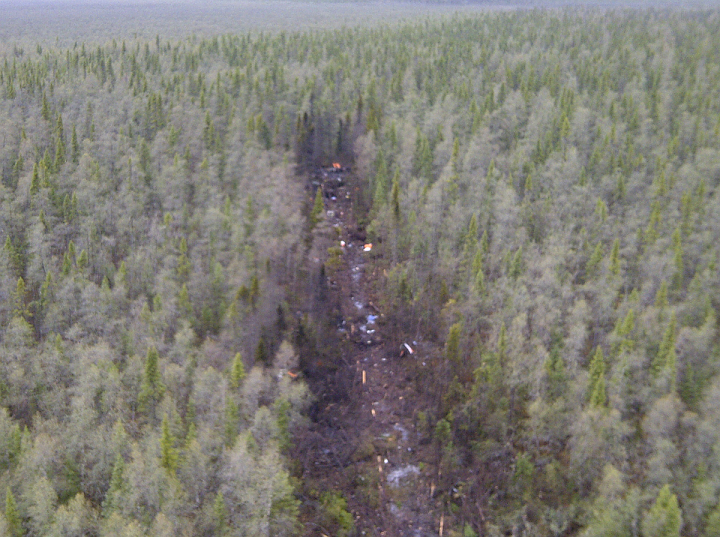TORONTO – Transportation safety officials said Wednesday that the crew of an Ornge air ambulance helicopter that crashed in 2013, killing four people on board, was not adequately trained and equipped to fly in total darkness.

The Sikorsky S-76A helicopter was en route to pick up a patient in the remote James Bay community of Attawapiskat when it crashed in Moosonee, Ont., shortly after midnight on May 31, 2013.
“Ornge did not have sufficient, experienced resources in place to effectively manage safety,” said Kathy Fox, chair of the Transportation Safety Board.
The Board’s report found the helicopter climbed about 90 metres in complete darkness on takeoff, but the angle of bank increased during a turn, causing the aircraft to inadvertently start descending.

The pilots didn’t notice until it was too late and the helicopter crashed less than two kilometres from the airport – and just 23 seconds after takeoff – killing the captain, first officer and two paramedics on board.
“The aircraft was destroyed by impact forces and the ensuring post-crash fire,” said the TSB report.
It’s critical that pilots using visual flight rules, like they were in Moosonee that night, have strong night and instrument flying skills, said TSB investigator Daryl Collins.

Get breaking National news
“As the crew turned towards Attawapiskat, they were turning into an area of total darkness, devoid of any ambient or cultural lighting; no town, no moon, no stars,” he said. “Although both pilots were qualified according to the regulations, they lacked the necessary night and instrument flying proficiency to safely conduct this flight.”
Collins criticized Ornge for not ensuring the pilots were “operationally ready” for the flight, and said they had not received sufficient and adequate training.
“Nor did the company’s standard operating procedures address the hazards specific to night operations,” he said. “Compounding this was the issue of insufficient and inexperienced personnel in key positions, which led to some company policies being bypassed, and ultimately, a sub-optimal crew pairing that night.”
The investigation also found that the regulator, Transport Canada, knew that Ornge was struggling to comply with regulations, added Collins.
“The training and guidance provided to Transport Canada inspectors led to inconsistent and ineffective surveillance,” he said.
Fox said the system let the Ornge helicopter crew down by putting them in a situation for which they were not operationally ready.
“This accident goes beyond the actions of a single flight crew,” she said.
“That’s why today we are making 14 recommendations to address safety deficiencies we’ve identified in Canada’s aviation system, recommendations aimed at improving the equipment on board aircraft, at changing the rules by which pilots operate and how and when they’re qualified to fly, and finally, at how Transport Canada oversees the entire system.”
The TSB wondered when and how Transport Canada should intervene in cases when it has significant concerns with an operator, as it did with Ornge.
“When is enough enough?” asked Fox.
READ MORE: Ornge failed to protect health and safety of pilots: federal investigators
The TSB recommends all commercial air operators implement a formal safety management system, and wants Transport Canada to conduct regular assessments of those systems.
“Transport Canada needs to adapt its surveillance policies, procedures and inspector training to ensure that it’s oversight activities are commensurate not just with an operator’s willingness to identify and fix problems, but with its capability to effectively do so,” said Fox.
Ornge said it has made many changes since the 2013 crash, including taking that model of helicopter ambulance out of service, hiring new staff with extensive experience, introducing a proficiency flying program and acquiring night vision goggles for pilots.

Comments